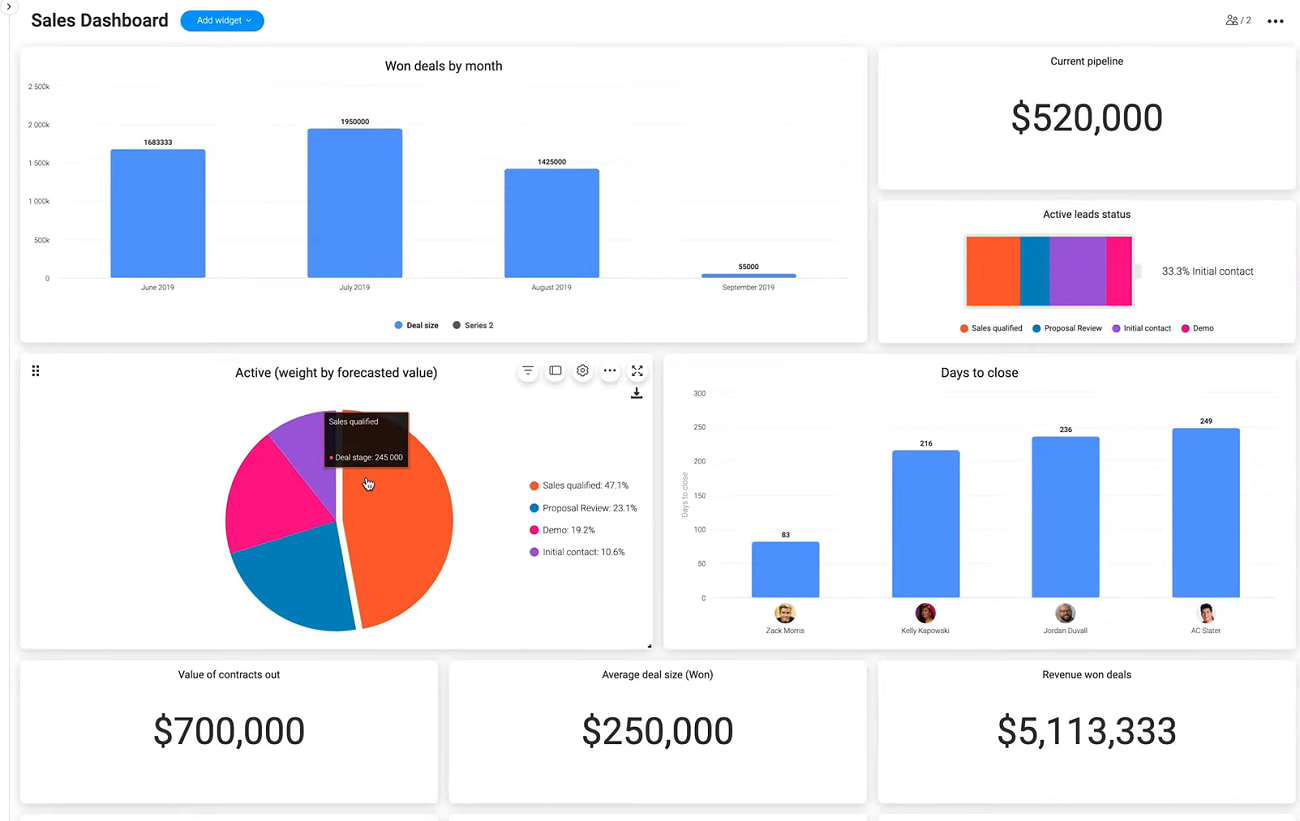Time is a mystical substance. When you don’t need it, you seem to have too much of it, and it drags out forever.
When you need more time, hours pass in the blink of an eye as you feel the cold stare of a pressing deadline on your back.
But it doesn’t have to be that way. With better time management, you can avoid the last-minute rush of “crunch time,” lower your stress levels, and deliver higher-quality work.
In this article, we highlight 5 time management strategies that can help you regain control of the hours in your day.
Why time management strategies are so important
A workload that feels unmanageable is one of the leading causes of stress in the workplace, and it can quickly lead to burnout.
If you feel like you have enough time in the day to handle all your work-related tasks, you’re 70% less likely to experience any form of burnout.
But here’s the kicker, almost half of all Americans feel like they don’t have enough time in the day to get things done.
When almost half of all workers are overwhelmed, it may seem like we’re all just too busy. Maybe management is just weighing us down with too much work.
Not so fast. Some employees report spending over 2 hours a day at work on distractions. So it’s not always the workload that’s the issue, but rather how we end up spending our time.
If you want to get more done in a day, you need to utilize your time better. It’s that simple.
Let’s move on to 5 ways you can trim the fat and turn your daily schedule into a lean, mean productivity machine (while reducing stress).
Strategy 1. Eliminate workplace distractions
One oft-overlooked strategy is to go out of your way to eliminate distractions.
It’s not just scheduling that’s the problem. In 2021, we have to deal with vibrating, pinging attention leechers all the time.
We’re not saying smartphones and social media sites are inherently evil, but they’re designed to give you dopamine hits to keep you coming back all day despite your best efforts.
Your attention is money. Spend it accordingly.
Instead of trying to rely on willpower, use site and app blocking applications like BlockSite, and turn off notifications.
Reducing workplace distraction leads to a whole range of benefits, including increased productivity, better work quality, and worker engagement and happiness.
But personal distractions aren’t the only problem. A noisy office, inconsiderate colleagues, and poorly managed meetings are other issues.
Even an out-of-control Slack channel or email thread can make it hard to get work done.
With monday.com, you can get a real-time overview of your tasks and projects at any given moment without having to message or ask someone to take you up to speed.
Just give your team workflow board a quick look, and you can see if anything has changed.
Of course, we’re not saying you should never talk to anyone, but when you’re in the zone, it feels great to move from one item to the next without distractions.
Strategy 2. Use the Eisenhower Matrix to prioritize, cut, or delegate
Let’s say you’ve already cut distractions, waste 0 minutes every day, and you still feel time-crunched.
You might feel like you have too much to do because you have, in fact, taken on too many tasks. Woah, mind-blowing stuff, am I right? But hear us out.
When smaller tasks pop up, it’s easy to add them to your task list. You’ll get to it eventually, you tell yourself.
But over time it builds up until there’s no end left in sight. It happens to the best of us.
Instead, use the Eisenhower Matrix to cut, prioritize, or delegate tasks and give yourself the time and space to do work that matters.
Create a simple graph with four quadrants based on urgency and importance.
- Prioritize items that are urgent and important.
- Schedule important but not urgent tasks for later.
- Delegate urgent but unimportant tasks.
- Cut what isn’t either urgent or important.
Prioritizing and delegating tasks are two essential time management skills you must master.
With monday.com, you can scale this approach to your entire team. With our Eisenhower Matrix template, you can rate work items by importance and urgency and specify the appropriate action for each one.
Don’t let fluff get in the way of crucial daily goals and targets.
Strategy 3. Schedule breaks and downtime and stay extra focused when you do work
There’s a difference between sitting down and working and actually doing work and being productive. Your brain needs to rest for you to be able to focus and do effective work. It’s that simple.In multiple case studies, companies that implement fewer work hours workdays actually experience increased productivity.
Last year, Microsoft Japan experimented with a 4-day work week, and productivity went up by 40%.
But you don’t need to take an extra day off to recharge.
Some research seems to suggest that 1-hour blocks followed by 15-minute breaks are the ideal intervals.
Many remote workers rely on the Pomodoro technique, where you work 25 minutes before a 5-minute break. (We tried it, with mixed results.)
The exact intervals probably vary from person to person, but the trend seems to be that more breaks lead to a higher output, as strange as that might seem.
Unfortunately, breaks have a bad rap in North America.
But don’t let the misinformation and toxic work culture stop you.
Even the World Economic Forum is pushing for employees to take more breaks. It’s their infographic.
So, if you’re in management, make the policy on breaks crystal clear in your company. If not, show your bosses the research, take your breaks unashamedly, and deliver better work.
With monday.com, you can use our time tracking function to track your work on tasks throughout the day. Plus, the amount of work you do is immediately apparent from your delivered work items.
That will allow you to take the breaks you need without worrying about appearances.
Strategy 4. Start with the toughest, most important task first
The premise of the “Eat That Frog” technique is quite simple. While you’re still fresh, get the hard stuff out of the way.
Start every workday by tackling the biggest, most important, and complex task first thing in the morning.
Why does this make a difference?
If you let it, your weekly schedule will bury you in tedious activity. Sure, you’re working, but without making any real progress. It’s easy to lose sight of a long-term goal and postpone challenging work.
Keep your focus over the long term by doing hard work first, rather than a hypothetical later (that may never come).
With monday.com, it’s easy to keep track of the big picture. You can prioritize specific work items and add time estimates to give you an indication of the amount of work required.
You can also add another column based on how difficult or painful it will be to complete.
Only focusing on small, routine tasks is a form of procrastination. Don’t let that bad habit get in the way of doing challenging tasks that matter.
Strategy 5. Automate reporting and other time-consuming tasks
Automation may not seem like a time management strategy, but it’s one of the most effective ways to get more work done in less time.
Employees around the globe spend way too much of their time on tasks that could be automated.
For example, let’s take a look at finance teams. Employees spend almost half their workdays creating and updating reports.
How much time do they want to spend? 3%! They’re spending 16 times more time on it than they want to.
The worst part is, a computer can handle most of that work for them.
For example, with monday.com’s powerful integrations, you can centralize data from multiple sources and generate reports in real time.
Don’t slow down your workday by manually trudging through data. Use smart solutions to free up your time to focus on more important work.
It probably isn’t possible to automate every little thing you’d rather not do. But the important thing is to start somewhere.
And with reporting and other work tasks, you don’t have to buy a $1,000 clothes folding machine to do it (I’m waiting until it hits the $99 mark).
You just need to choose smarter software for managing your work.
Conclusion
Without any system for time management in place, it’s easy to get caught by surprise by the ebb and flow of projects, work, and life.
Use any of these time management strategies to remain in control of your workday.
If you want to revolutionize how you use your time, you need to structure it. Use our work management software for time tracking and real-time reporting to set the stage for real growth.










